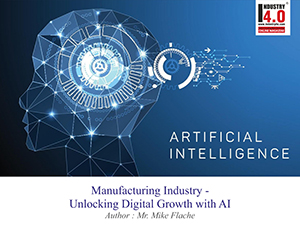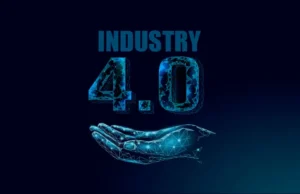Generative AI in Manufacturing
“Generative AI is primarily a technology for digital industries,” is what I still hear in 2024.
That’s far from the case.
Generative AI can significantly increase productivity and the quality of results, especially in traditional industries such as manufacturing.
Here is the list of 10 key application areas where generative AI is having a significant impact on Manufacturing:
1. Product Design and Development
Generative Al algorithms can rapidly generate numerous design alternatives based on specified criteria such as durability, weight, cost, and materials. This not only accelerates the design process but also uncovers innovative design solutions that may not be immediately apparent to human designers.
2. Predictive Maintenance
By analyzing data from machinery sensors, generative Al can predict equipment failures before they occur, scheduling maintenance only when necessary. This reduces downtime and extends the lifespan of manufacturing equipment.
3. Supply Chain Optimization
Generative Al can model and simulate complex supply chain scenarios, helping manufacturers optimize inventory levels, reduce lead times, and mitigate risks associated with supply chain disruptions.
4. Customization at Scale
Generative Al enables the mass customization of products by generating unique designs that meet individual customer specifications without significantly increasing production costs or time.
5. Quality Control and Inspection
Generative Al can model and simulate complex supply chain scenarios, helping manufacturers optimize inventory levels, reduce lead times, and mitigate risks associated with supply chain disruptions.
6. Energy Consumption Optimization
By analyzing patterns in energy usage across manufacturing. processes, generative Al can identify opportunities for reducing energy consumption and carbon footprint, promoting sustainable manufacturing practices.
7. Robotics and Automation
Generative Al enhances the capabilities of robotic systems in manufacturing, enabling them to adapt to new tasks without explicit reprogramming. This flexibility is crucial for automating complex or customized production processes.
8. Material Science
In the realm of material science, generative Al can predict the properties of new materials or suggest compositions for materials that meet specific criteria, accelerating the development of innovative materials for manufacturing.
9. Human-Machine Collaboration
Generative Al can design optimal workflows that enhance collaboration between humans and machines, ensuring safety. and efficiency while leveraging the unique strengths of both.
10. Training and Simulation
Generative Al can create realistic simulations and training environments for employees, helping them acquire new skills or adapt to new technologies without the risk and expense of real- world training.
These application areas demonstrate the versatility and transformative
potential of generative AI in manufacturing.
About the Author :

Founder and Board Member Flache International & Flache.org. Advisor and Mentor, Former Entrepreneur and Angel Investor, Most Influential Digital Transformation Specialist (Global Excellence Awards)
Mike Flache is an advisor and mentor, former entrepreneur and angel investor. Together with talented teams, he builds digital businesses worldwide. Onalytica’s analysts named him one of the top-10 global thought leaders in digital transformation. Mike helps high-tech innovators in Silicon Valley, Europe, and Asia grow and scale. Together with the Fundment team, he is currently building one of the next billion-dollar companies in financial technology. Mike is also a partner of Fortune 500 companies and technology vendors. He has worked with executives from companies such as the Silicon Valley Innovation Center, Google, Amazon, Huawei, and Mercedes-Benz.
Mr. Mike Flache is Bestowed with the following Honors & Awards :
https://www.linkedin.com/in/mi
Mr. Mike Flache can be contacted at :
LinkedIn | E-mail | E-mail | Personal Website | Twitter | Instagram | Official Website
Also read Mr. Mike Flache‘s earlier article:













